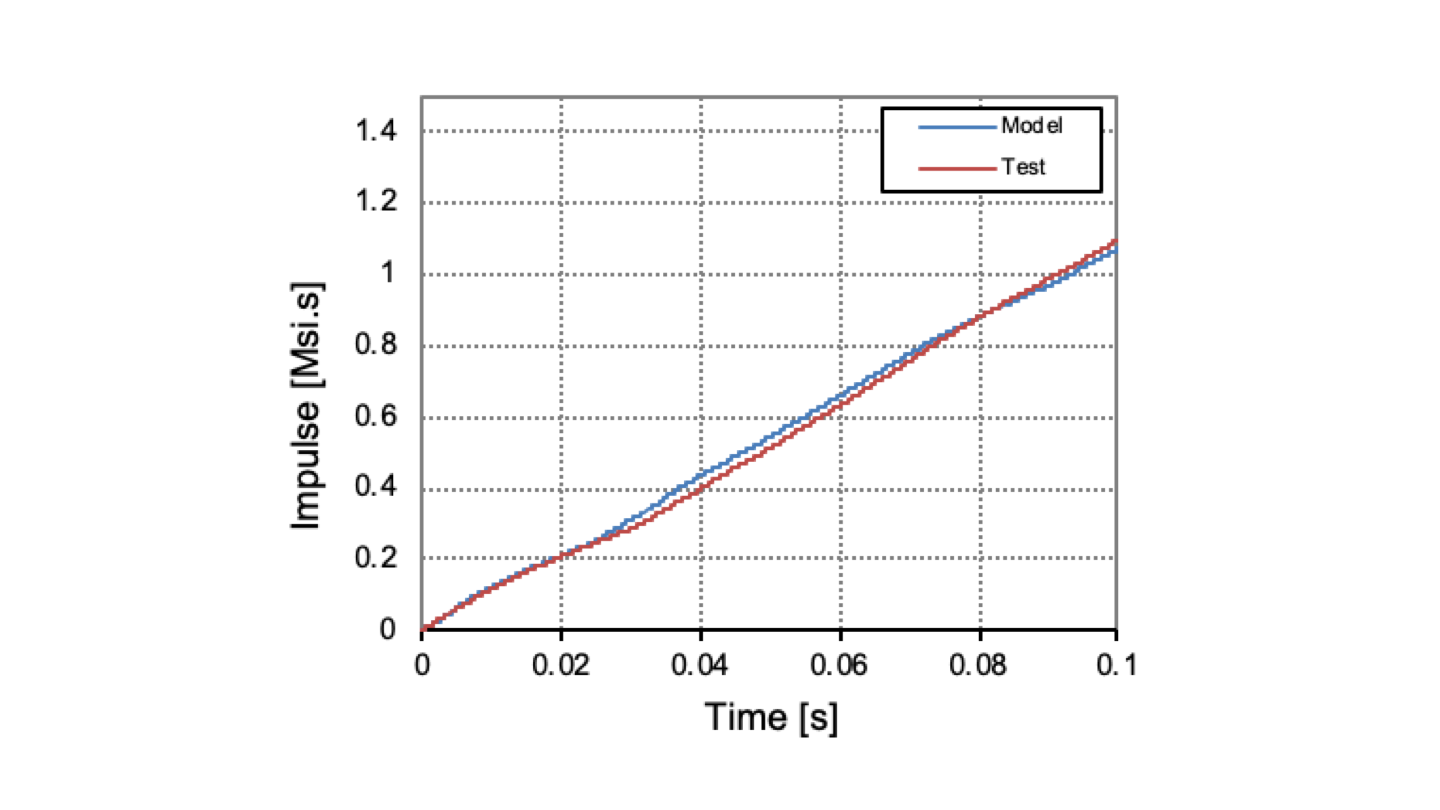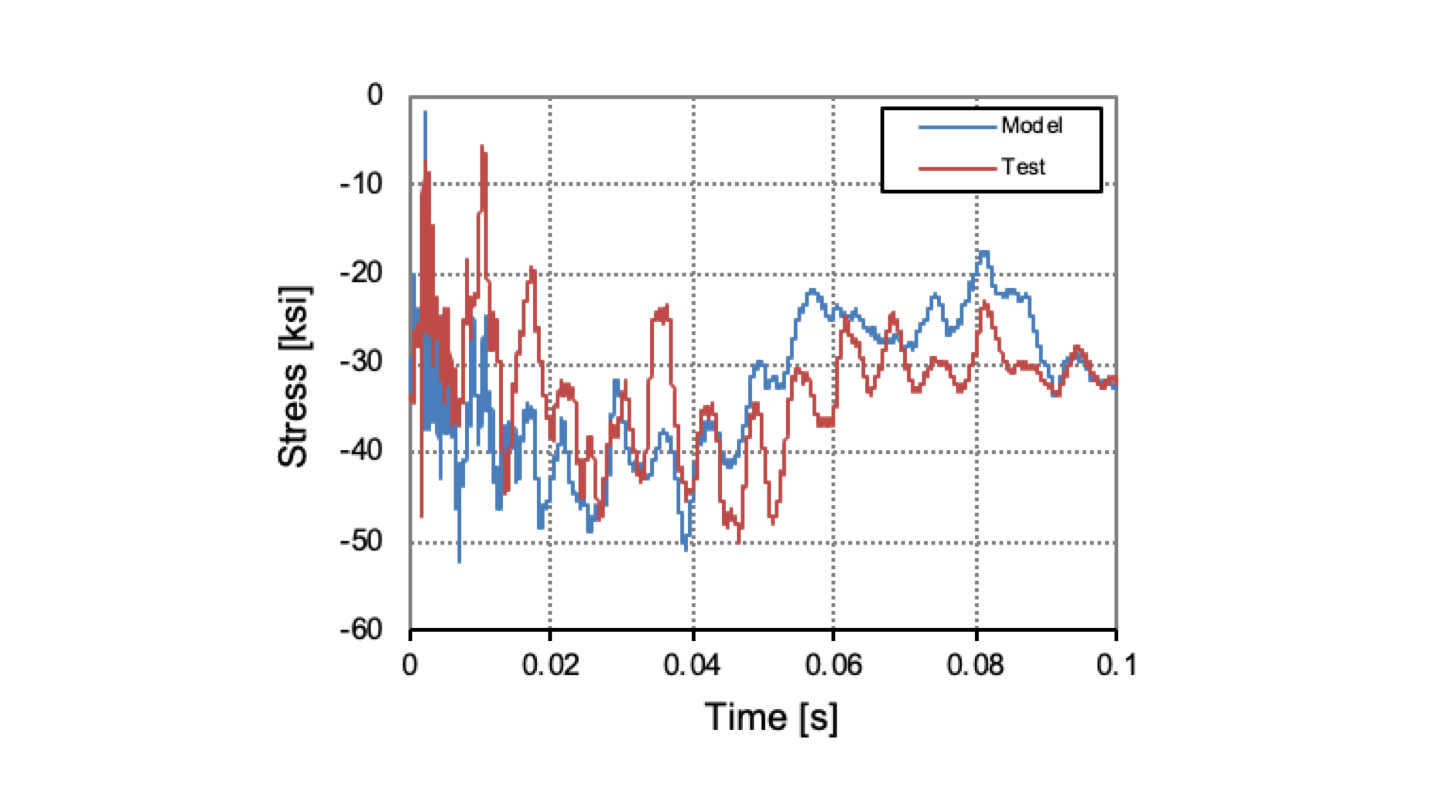Completion Dynamics

The act of perforating a well using explosive charges is inherently risky. Any failure of the tool string or its components can compromise the integrity of the well and result in work over costs that can run into the tens of millions of Dollars/Pounds/Euro to rectify. In extreme situations failure could even mean the loss of the well. Because the cost of failure is so high, efforts have been made for a long time to quantify the risk. To do this, one of the tools at our disposal is simulation.
In this example, a short completion string that was used in a perforation job in the Gulf of Mexico, is evaluated. A fluid model calculates the pressure dynamics that are generated in the system by the detonation of the explosive charges used to perforate the formation. These pressure dynamics are responsible for the energy that is transferred to the tool string, generating a coupled dynamic response with corresponding stress and strain dynamics. The time scale for these events, shown in the banner above, is measured in milliseconds. The axisymmetric fluid model (top) depicts the pressure dynamics that result from charge detonation and generate the stress response on the string, shown below.
A critical aspect of running such simulations effectively is model validation. In this case, the perforation job was equipped with a pressure gauge located just above the perforation zone. The graphs show pressure, impulse and stress calibrations between calculated and measured data. Given the complexity of the physics associated with these events, the degree of correlation is remarkable.
Examining the pressure curve in combination with the dynamic model output, for example, brings the benefits of simulation to light. Whereas just looking at pressure curves on their own provides a measure of the system behaviour, at least at the measurement location, having the confidence in the model confirmed by a good match means that we can now go and look anywhere in the model, locations not accessible by measurement alone, and gain insight into why certain features exist, where they come from and how we can leverage them to improve the efficacy of the design. Looking at impulse, which is derived from pressure, we can get an indication of the accuracy of our charge model calibrations when applied to larger systems. Finally, extracting stress and strain allows us to quantify the risk to structural integrity.
The results shown here represent a mere sample of the information available in such a model and the insight we can extract can be tailored to each specific job. We have run such simulations for numerous wells around the world in predictive risk assessment scenarios as well as post job to explain the cause of deviation from expected performance or even failure.



